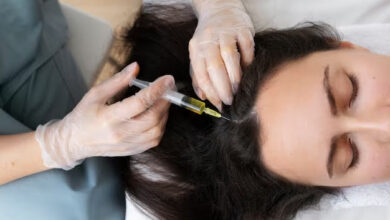Here’s Why the Japanese Have Great Skin

From daily practices to essential beauty materials, here are a few Japanese homemade Skin and Beauty secrets that have kept them feeling young, beautiful, toned, from eons ago.
Every week, a new beauty product comes around, and we’re constantly bombarded by advertisements about how buying it will make our lives that much better: your skin will be nurtured, you’ll look ten times younger, and Mr. Right will finally knock on your door.
Okay. Miracles do happen. Many a time, though, it comes down to our daily regimens that keep our bodies comfortable and in shape — and no, those don’t always have to be expensive.
Japanese Beauty Secrets
Here are simple Japanese Natural Beauty Tips for glowing skin that has proven long-lasting beauty effects.
Exfoliate With Azuki Beans
Japanese women have used this little red bean since as early as the Nara period (710-794), as part of a healthy Diet and healthy-looking skin.
Ground into a slightly coarse scrub or a fine powder, azuki beans are an excellent natural remedy for those prone to blackheads or acne, or who wish to get rid of fine lines.
These legumes contain a naturally occurring foaming agent known as saponin that helps cleanse and tighten pores and are high in antioxidants.
It has an immediate effect when used as it helps remove dead skin cells and dirt gently, brightening the skin and unclog pores by stimulating blood circulation.
Maintain a Traditional Balanced Diet
We often ignore that what we put inside our bodies is directly linked to how we look on the exterior. A traditional Japanese meal is typically made under the ichijyu sansai principle (one soup with three vegetable dishes plus fish and rice) to assure proper balance.
These spreads are rich in omega-3 fatty acids and high in Vitamins that help reduce the body’s toxins production that can cause premature aging and inflammatory skin conditions.
Kelp (kaiso) and Seaweed found in almost every Japanese dish, are rich in keratin and iodine — both highly essential for healthy nails, skin, and resilient shiny hair.
Fish is lower in fat than red meat and rich in protein, while small portions of a variety of vegetables will supply much-needed minerals and vitamins.
Japan is also home to several superfoods — such as kinako, konjac, and natto — that are cheap and readily available compared to other superfoods in other nations.
Related Articles:
Well Balanced Diet Plan and its Some Important Facts
Why Balanced Diet Is Necessary? And It’s Some Foods to Eat
Eating Disorder – Balanced Diet Is A Must
Here’s why the Japanese Have Good Skin
For eons, the Japanese have appreciated and known the wonderful benefits of rice bran or komenuka.
Full of antioxidants (more than seventy in fact!) and other essential nutrients, rice bran powder has been used in facials, scrubs, and even body treatments to resolve blemished Skin, help battle the signs of aging, and leave the skin tight, toned, and soft.
Use Green Tea for Various Purposes
High in antioxidants, anti-inflammatory, and antibacterial properties, green tea is vital to the Japanese lifestyle.
Japanese women have also added green tea in their beauty regimens — from incorporating the extracts in various tonics and lotions to adding ground leave to bath salts and even adding concentrated powders to hair masks and body compress treatments.
The ground variant of green tea leaves, matcha, is reputed for its high catechin polyphenols, which have endless beauty and health benefits. The high levels of tannins are also believed to help tighten the skin.
Green tea powder can reactivate dying skin cells, counter damage caused by UV rays, reduce inflammation (particularly with acne-prone skin), and balance skin tone.
Bath Daily, Go To Onsen Regularly
Bathing in Japan is much more than a cleansing regimen: it’s a beauty ritual.
Sento (public bathhouses) and onsen (natural hot springs) are scattered throughout resorts, city centers, and even unattended random open-air spots, offering people plenty of opportunities to scrub, soak, and relax in mineralized and nutrient-enriched natural waters.
But the ofuro or home bath (not shower), is also a crucial part of every Japanese woman’s daily ritual. A steaming bath before sleeping will not only leave you feeling relaxed; it will also prevent shoulder stiffness and back pain, help blood circulation, prevent leg swelling, and relax muscles.
For replenishing and extra moisturizing skin effects, infuse your bath with natural salts or oils. Steam is also an excellent way to detox, promoting bright skin, and further helping clear pores.
A bath will hasten the body’s natural production of melatonin, the hormone responsible for not only a comfortable night’s slumber but also one which has powerful antioxidant properties.
Love, Eat, & Worship Tsubaki Oil
Since ancient times, Japanese women have been turning to camellia (Tsubaki) oil for their hair, skin, and overall Well-Being.
More often present in hair products, this oil is exceptionally rich in oleic acids (also known as omega-9 fatty acids), glycerides, and essential proteins, which result in a combination that is perfect for a healthy head of voluminous, shiny and silky hair.
Edible Tsubaki oil has been used to lower cholesterol, boost immunity, and balance blood sugar levels. It can be applied directly to acne-prone or dry skin or on your hair. Another way to use it is when cooking fried dishes like tempura.
Tsubaki cooking oil is much richer in vitamins and much lighter than salad oil.
Embrace Vitamin C
We often relate vitamin C with our ability to fight colds and rarely make the association that it works its magic by boosting our natural collagen supply and maintaining general health and bone density.
It also helps break down and deoxidize melanin, the natural pigmentation we get in our skin from aging and tanning. It’s the sunny vitamin that brightens things up and helps give you truly glowing and natural skin.
Japanese women constantly take vitamin C through supplements, food, drinks, vegetables and fruit, and cosmetic products.
Some Japan-only vegetables and fruit and, such as the kaki (Japanese persimmon), citrusy yuzu, and shiso (a type of wild basil), are all extremely high in the wonderful vitamin. You can find it in any chemist store in supplement forms.
At the same time, vitamin C-rich products — such as yuzu, acerola, parsley, kaki, bell pepper, goya, broccoli, and kiwi — are available at a store in your locality.
Use Vitamin C Serums for Glowing and Younger Skin
Vitamin C – Using Oranges May Cure Eyesight
All Questions Answered About Vitamin C
The Truth About Topical Vitamin C
Bottom Line
It’s a general belief across many cultures that true beauty comes from inside. In Japan, it is known as unseen beauty or mienai oshare. The phrase implies that beauty doesn’t need to be physically demonstrated or seen to be recognized or appreciated.
It reflects the confidence and poise that no pricey product can buy: a bright glow, smile, or warm energy that others notice when you’re confident, happy, and self-aware. This, too, should be a significant part of your daily beauty regimen.
Source Link: https://howtocure.com/homemade-japanese-beauty-secrets/
By : Natural Health News




